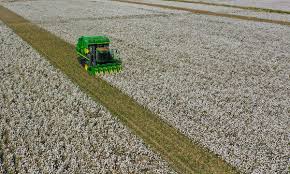Xinjiang cotton exports soar despite US sanctions, fuelled by tech revolution

Xinjiang's cotton industry has defied US sanctions with a record increase in exports, thanks to a ‘revolutionary shift’ in textile mill technology. This comes despite the US banning imports of many Xinjiang cotton products in 2022 due to concerns about human rights abuses against Uygur Muslims in the region.
A digital revolution in textiles
In 2023, Xinjiang's textile exports reached a staggering 108 billion yuan ($14.8 billion), marking a 74 per cent increase in yarn and raw materials and a 30 per cent rise in clothing exports compared to the previous year. This growth follows the US sanctions, which aimed to cripple the region's cotton industry. However, China responded with a significant technological upgrade. Backed by the government and textile industry, Chinese scientists equipped Xinjiang's mills with cutting-edge artificial intelligence (AI) and 5G technology.
This digital transformation has significantly enhanced Xinjiang's cotton production. AI plays a crucial role by monitoring every stage of production, identifying potential issues and ensuring consistent quality. Meanwhile, 5G's high speed allows for real-time data collection and adjustments, optimizing energy use throughout the manufacturing process. China's extensive 5G infrastructure and rapid technological advancements have further reduced the cost of implementing these technologies compared to other cotton-producing countries.
Challenges and concerns
Despite rising exports, challenges remain. The US government maintains its stance that Xinjiang cotton products are likely produced with forced labor. Washington is considering further sanctions and claims that conducting due diligence within Xinjiang's supply chains is ‘impossible’ due to restrictions imposed by the Chinese government. Human rights groups further raise concerns, alleging that over one million Uygurs are subjected to forced labor in Xinjiang. China vehemently denies these claims.
A broader industrial trend
China's Ministry of Industry and Information Technology forecasts by next year, 70 per cent of China's textile factories will be digitally connected and utilizing AI. The transformation of Xinjiang's cotton industry serves as a microcosm of China's broader push towards industrial modernization. By embracing advanced technologies, China aims to bolster its manufacturing prowess and enhance its global competitiveness across various sectors.
The future of Xinjiang cotton remains uncertain. The effectiveness of further US sanctions and the ongoing human rights concerns will likely continue to impact the industry. However, one thing is clear: China's technological advancements have significantly reshaped Xinjiang's cotton production, propelling it towards a record-breaking year despite international pressure.
